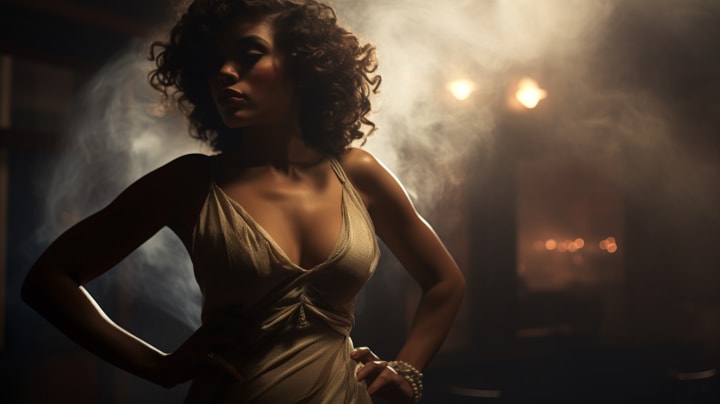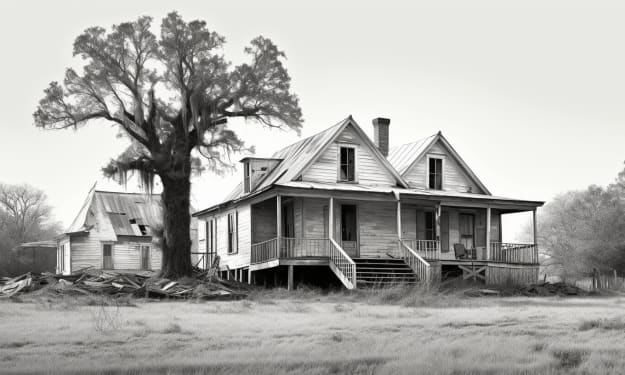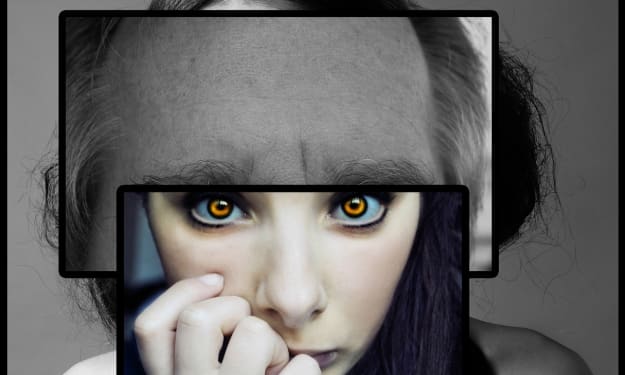The Harlem Dancer
Engaging With and Engaging In Female Objectification

[Author's Note: "Harlem Dancer", the subject poem, may be found HERE.]
----------------------------------------------------------------------------------------
Simply recognizing a problem is not sufficient, on its own, in overcoming a problem. “The Harlem Dancer”, a lyric poem written by Claude McKay in 1922, serves as a reminder of this fact.
Employing highly descriptive language to establish tone and setting, “The Harlem Dancer” addresses the theme of female objectification and how even the good-intentioned may be guilty of its perpetuation. Sometimes a person can unwittingly be part of the problem, rather than an objective observer.
McKay was one of the leading literary figures of the Harlem Renaissance, but unlike most of his contemporaries in that movement, he showed a preference for writing closed-form poetry. “The Harlem Dancer” is a skilled example of one of McKay’s preferred poetic forms, the English sonnet.
The demands of the fixed form dictate the meter and rhyme scheme, but McKay’s profuse descriptive imagery transcends these constraints. Furthermore, the theme of female objectification is subtly reinforced by the consistent use of masculine end rhymes throughout the work. Although he makes ample use of figurative devices in this poem, McKay foregoes the use of symbolism, preferring, instead, more concrete descriptions.
The setting of “The Harlem Dancer” is a bawdy nightclub, indicative of the roaring 1920’s atmosphere in which the poem was written. McKay uses auditory imagery to introduce the boisterous scene, replete with “applauding youths” who laughed with “young prostitutes” (line 1).
The focus of their attention is revealed through visual imagery to be a scantily dressed chanteuse whose “half-clothed body” swayed to the music (line 2). The suggestive nature of the poem’s introductory images makes clear that the title character is as much an exotic dancer as a singer, though she seemingly possesses a captivating voice.
By way of simile, McKay effectively employs alliteration to reinforce his auditory imagery, disclosing that “her voice was like the sound of blended flutes blown by black players upon a picnic day” (lines 3-4). Such descriptions, evocative of bright, sunny days and sweet, pleasant strains, stand in stark contrast to the dark, noisy, nighttime world of the speakeasy.
McKay is, perhaps, planting the seed of an idea that the dancer is out of her element in this place. The narrator, at least, seems to place her above her environs.
In the second quatrain, McKay employs further visual imagery to deepen the description of his Harlem dancer. It is at this point, too, that the narrator’s own fascination with the subject begins to come to light. Her “graceful” and “calm” performance takes its effect on him, as does the “light gauze hanging loose about her form” (lines 5-6). Here McKay combines assonance with a pair of similes to create an effective visual image; “she seemed a proudly-swaying palm” who was “lovelier for passing through the storm” (lines 7-8).
The narrator’s enchantment is now showing through, amidst the rollicking crowd. Despite the solemn and introspective tone created by the high, poetic diction of the sonnet, the interest of the narrator is revealed to be not quite so detached. There are vague hints of conflict in these images.
The description of her demeanor might be equally applicable to a performer in a more respectable establishment, but there is an immediate reminder that there is a lack of respectability in this place. A more respectable setting would not likely include a performer in see-through clothing.
The poet does not linger long on the wistful musings of his narrator. The third quatrain is utilized to draw us back more fully, and somewhat abruptly, to the reality of the sordid setting. After briefly reflecting on the beauty of the dancer’s hair, McKay reinserts the “wine-flushed, bold-eyed boys” who are “tossing coins in praise” (lines 10-11). Young men throwing their money on stage clarify the situation, once again.
The poem is not called “The Harlem Singer” for a reason. No matter how lovely her voice may be, it is secondary to the purpose of her employment. These alcohol-fueled revelers, and “even the girls”, “devoured her with their eager, passionate gaze” (lines 11-12). This final quatrain returns jarringly to the fact that the Harlem dancer, despite her inherent beauty and talent, is merely an object of lust in this setting. She is objectified by both the male and female onlookers and that is her purpose there.
In the ending couplet of “The Harlem Dancer”, McKay reveals in a twist that the center of attention, the very subject of the poem and everyone’s desire, is not actually there. Physically, she is, of course, but figuratively speaking, she is not. “Her falsely smiling face” is only a façade (line 13).
In a moment of recognition, the narrator comes to understand that she “was not in that strange place” (line 14). It can only be imagined what unfortunate circumstance brought her to this place where she was reduced to a sexualized object.
In the end, the mask is peeled back to reveal the underlying truth. Like the victim of a sexual assault, the dancer’s coping mechanism is to psychologically remove herself from her present reality.
On the surface, “The Harlem Dancer” serves as a sort of exposé of female objectification. At the same time, however, this objectification is shown to go beyond a mere veneer. There is a dramatic irony that one need not dig too deeply to uncover.
In reading McKay’s poem, it may be easy to imagine that his narrator is somehow not like the others, but therein lies the rub. He is himself, there “in that strange place” (line 14).
It is of small consequence that he can analyze his surroundings and reflect on his own, presumably, genuine appreciation for the dancer. There is precious little separating him from the dissolute crowd in whose midst he has placed himself. He is one of them.
----------------------------------------------------------------------------------------

----------------------------------------------------------------------------------------
Work Cited
McKay, Claude. “The Harlem Dancer”.
About the Creator
Randy Baker
Poet, author, essayist.
Enjoyed the story? Support the Creator.
Subscribe for free to receive all their stories in your feed. You could also pledge your support or give them a one-off tip, letting them know you appreciate their work.
Reader insights
Outstanding
Excellent work. Looking forward to reading more!
Top insights
Compelling and original writing
Creative use of language & vocab
Easy to read and follow
Well-structured & engaging content
Expert insights and opinions
Arguments were carefully researched and presented
Eye opening
Niche topic & fresh perspectives
Masterful proofreading
Zero grammar & spelling mistakes
On-point and relevant
Writing reflected the title & theme






Comments (1)
Off to Google this poem now - thank you! I am fractionally more cultured than I was this morning 👍